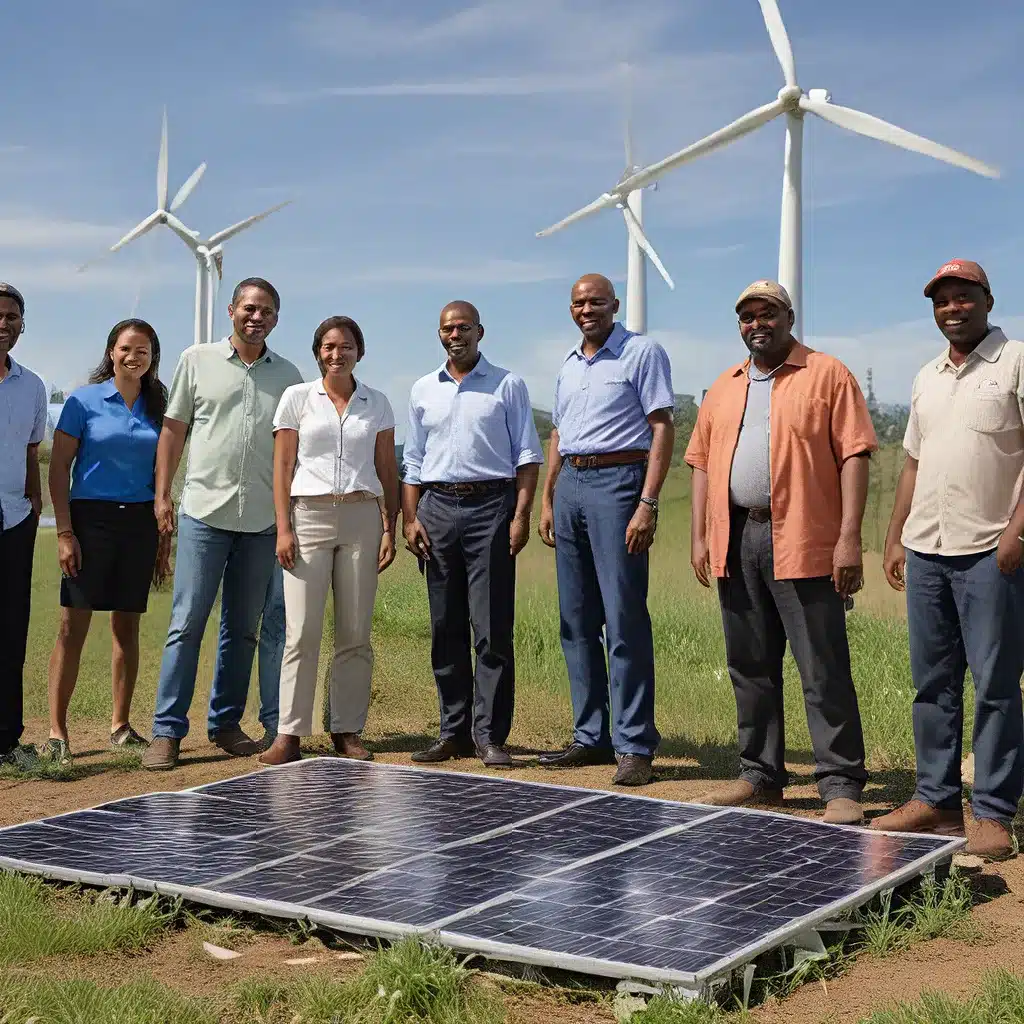
As a renewable energy enthusiast, I’ve always been fascinated by the power of grassroots movements to drive sustainable change. In my experience, community organizers play a vital role in harnessing the passion and collective action of everyday people to transform their neighborhoods, cities, and even entire regions. And when it comes to the clean energy transition, these unsung heroes are the real catalysts for local-level progress.
Unlocking the Power of Community
I still remember the day I attended my first community meeting on renewable energy. The room was buzzing with excitement as neighbors shared stories of installing solar panels, starting community gardens, and lobbying their local government for eco-friendly policies. What struck me most was the palpable sense of empowerment – these weren’t just passive residents, but proactive change-makers taking charge of their energy future.
As the Local Infrastructure Hub’s roadmap for cities highlights, community organizers are the linchpins that bring people together, identify shared priorities, and translate ambitious goals into concrete action. Whether it’s organizing solar co-ops, advocating for electric vehicle chargers, or pushing for building efficiency upgrades, these grassroots leaders know how to mobilize their communities and make their voices heard.
Tapping into Local Knowledge and Relationships
One of the biggest advantages of community-driven renewable energy initiatives is the deep well of local knowledge and relationships that organizers can tap into. After all, who knows a neighborhood better than the people who live there? Community organizers are uniquely positioned to understand the specific needs, challenges, and opportunities within their communities.
For example, when a community group in a low-income area wanted to expand solar access, the local organizer was able to identify the best rooftops for panels, connect with trusted community leaders to spread the word, and secure funding from municipal green banks. The White House’s executive order on federal sustainability highlights the importance of this kind of hyper-local approach, emphasizing the need to incorporate environmental justice considerations and deliver equitable benefits to underserved communities.
Bridging Gaps and Fostering Collaboration
Renewable energy is inherently a collaborative endeavor, requiring coordination between policymakers, businesses, nonprofits, and everyday citizens. But navigating these complex webs of stakeholders can be a daunting task. That’s where community organizers shine, using their interpersonal skills and relationship-building prowess to bridge gaps and foster productive partnerships.
I’ve seen organizers bring together city officials, utility companies, and community groups to co-design innovative financing mechanisms for home energy retrofits. They’ve connected small businesses with workforce development programs to create local green jobs. And they’ve convened diverse coalitions to advocate for ambitious renewable energy targets and supportive policies at the municipal level.
Catalyzing Grassroots Innovation
Perhaps most importantly, community organizers have an uncanny ability to unleash the creativity and problem-solving capacities of their neighbors. By empowering people to take ownership of their energy future, they unlock a wellspring of grassroots innovation that can lead to truly game-changing solutions.
I’ll never forget the community group that transformed a vacant lot into a thriving urban farm, complete with a microgrid of solar panels and battery storage to power their operations. Or the neighborhood that banded together to create a cooperative electric vehicle charging network, complete with shared maintenance and affordable access for low-income residents. These are the kinds of inspiring, community-driven initiatives that are redefining what’s possible in the clean energy transition.
Scaling Up Local Progress
Of course, the challenge with grassroots movements is how to scale up their impact beyond the local level. But savvy community organizers have found ways to do just that, using their success stories and best practices to influence policymakers, attract investment, and inspire replication in other communities.
As President Biden’s recent announcement on the Major Economies Forum on Energy and Climate highlights, the federal government is increasingly recognizing the vital role of local action in driving the clean energy transition. By supporting community-based initiatives and scaling up successful models, policymakers can amplify the impact of grassroots organizers and accelerate progress towards national and global climate goals.
Empowered Communities, Empowered Planet
At the end of the day, the renewable energy revolution isn’t just about technology and policy – it’s about people. And community organizers are the unsung heroes who are harnessing the power of collective action to transform their neighborhoods, one street, one block, one town at a time.
So if you’re looking to get involved in the clean energy movement, I’d encourage you to seek out your local community organizers and find out how you can lend a hand. Together, we can build a future where every community has the power to control its own energy destiny – and in doing so, collectively empower our planet to a more sustainable tomorrow.
Explore Firewinder’s renewable energy solutions to power your community’s clean energy transition.

